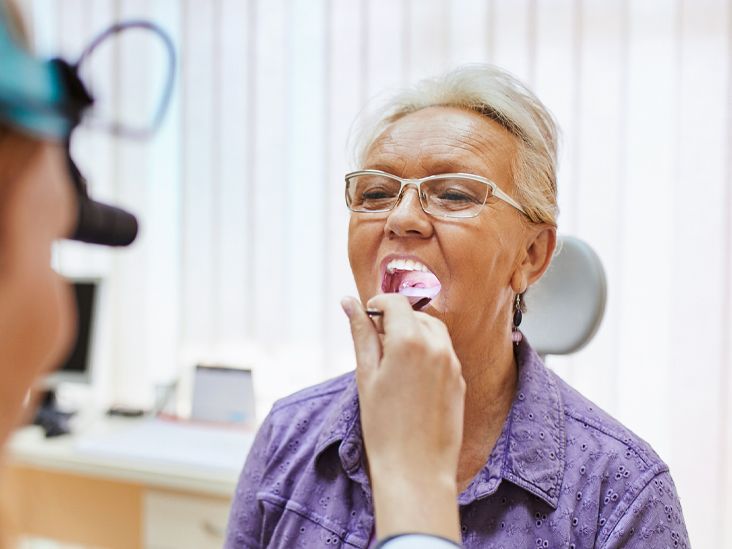
Understanding Oral Cancer: Risks, Symptoms, Diagnosis, and Treatment
Oral cancer refers to malignant growths that develop in the tissues of the mouth or throat, and it falls under the broader category of head and neck cancers. This condition predominantly originates in squamous cells found in various areas, including the mouth, tongue, and lips. Each year, over 53,000 individuals in the United States receive an oral cancer diagnosis, with the majority being over the age of 40. Often, these cancers are detected only after they have metastasized to the lymph nodes in the neck. Early identification plays a crucial role in improving the chances of survival.
Types of Oral Cancer
Oral cancers can develop in several areas, including:
- Lips
- Tongue
- Inner lining of the cheeks
- Gums
- Floor of the mouth
- Hard and soft palate
Regular dental checkups can help your dentist identify early signs of oral cancer, making it crucial to visit your dentist at least twice a year.
Risk Factors for Oral Cancer
The most significant risk factor for developing oral cancer is the use of tobacco products, which includes smoking cigarettes, cigars, and pipes, as well as chewing tobacco. Those who consume high amounts of alcohol, particularly in conjunction with tobacco use, face an even greater risk. Other contributing factors include:
- Human Papillomavirus (HPV) infection
- Chronic sun exposure to the face
- Previous diagnosis of oral cancer
- Family history of oral or other cancers
- Compromised immune system
- Poor nutrition
- Genetic conditions
- Being male, as men are approximately twice as likely to be affected
Symptoms of Oral Cancer
Common signs and symptoms of oral cancer include:
- Non-healing sore on the lip or inside the mouth
- Unexplained mass or growth in the oral cavity
- Bleeding from the mouth
- Loose teeth
- Difficulties or pain while swallowing
- Problems with dentures
- Lump in the neck
- Persistent earache
- Significant weight loss
- Numbness in the lower lip, face, neck, or chin
- Presence of white, red, or mixed-colored patches inside the mouth
- Chronically sore throat
- Jaw stiffness or discomfort
- Pain in the tongue
While some symptoms may indicate other health conditions, it’s important to consult a healthcare provider if these issues persist or if multiple symptoms occur simultaneously.
Diagnosis of Oral Cancer
The diagnostic process typically begins with a thorough physical examination conducted by your dentist or doctor. This includes inspecting the roof and floor of the mouth, throat, tongue, cheeks, and lymph nodes. If symptoms persist without a clear cause, you may be referred to an ear, nose, and throat (ENT) specialist.
If suspicious lesions or tumors are found, additional tests such as a brush biopsy (a painless method that collects cells) or a tissue biopsy (removal of tissue for laboratory analysis) may be performed.
Your doctor may also recommend imaging tests like:
- X-rays
- CT scans
- PET scans
- MRI scans
- Endoscopy
Stages of Oral Cancer
Oral cancer is classified into four stages, based on the size of the tumor and whether it has spread:
- Stage 1: Tumor is 2 centimeters (cm) or smaller; no lymph node involvement.
- Stage 2: Tumor measures between 2-4 cm; lymph nodes are unaffected.
- Stage 3: Tumor exceeds 4 cm without lymph node spread, or is of any size with involvement of one lymph node.
- Stage 4: Tumors can be of any size and have spread to nearby tissues, lymph nodes, or distant organs.
The five-year survival rates for oral and pharyngeal cancers vary significantly based on stage:
- 83% for localized cancers
- 64% for cancers spread to nearby lymph nodes
- 38% for cancers that have metastasized
Treatment Options for Oral Cancer
Treatment strategies depend on the specific type, location, and stage of oral cancer. Common approaches include:
Surgery
Typically performed in the early stages, surgery aims to remove the tumor and possibly affected lymph nodes.
Radiation Therapy
This method involves directing radiation at the tumor, usually administered over several weeks. Advanced stages may require a combination of chemotherapy and radiation.
Chemotherapy
Medication is used to destroy cancer cells, delivered orally or through intravenous methods.
Targeted Therapy
This treatment targets specific proteins on cancer cells to inhibit their growth, suitable for varying stages of the disease.
Nutritional Support
Maintaining proper nutrition is vital, as treatments can disrupt eating. Consultation with a nutritionist can help create a diet plan that is appropriate during recovery.
Mouth Health Maintenance
It is essential to keep the mouth clean and moist throughout cancer treatment.
Post-Treatment Recovery
Recovery from oral cancer treatment can vary widely. After surgery, common symptoms may include pain and swelling, while larger tumor removals may affect chewing, swallowing, or speech. Reconstructive surgery could be necessary for significant changes to oral structure.
Radiation therapy comes with its own set of side effects, such as:
- Sore throat or mouth
- Dry mouth and salivary gland dysfunction
- Tooth decay
- Nausea and vomiting
- Infections in the skin and mouth
- Fatigue
- Changes in taste and smell
Chemotherapy may lead to:
- Hair loss
- Painful mouth or gums
- Severe anemia
- Weight loss
The side effects of targeted therapies can be more manageable, but may still include headaches and skin reactions.
Reconstruction and Rehabilitation
Patients with advanced oral cancer often require reconstructive surgery and rehabilitation to recover their ability to eat and speak. Techniques can include dental implants or grafts to repair missing tissue or structure.
Prognosis
Prognosis markedly depends on the cancer type and stage at diagnosis, as well as individual health factors. Early diagnosis enhances treatment effectiveness and increases the likelihood of successful outcomes.
Post-treatment, regular follow-ups consisting of physical exams and imaging tests are essential for monitoring recovery and addressing any lingering concerns.
Reading Oral Cancers
